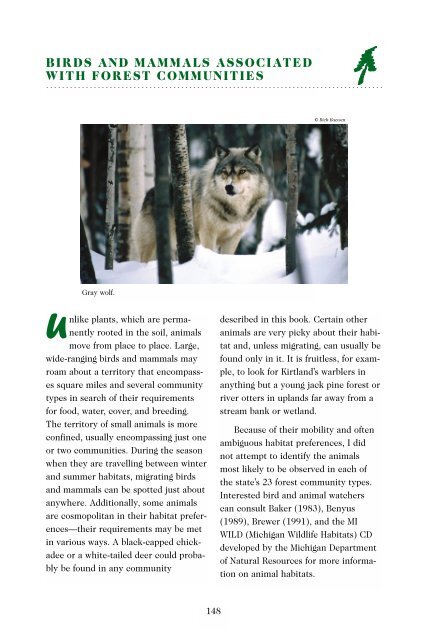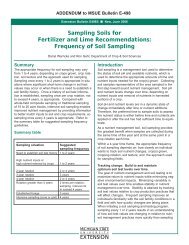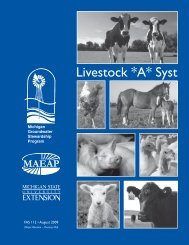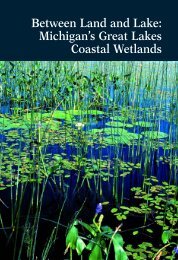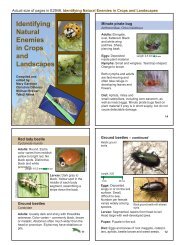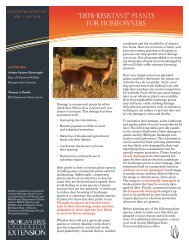Michigan Forest Communities - Michigan Association of ...
Michigan Forest Communities - Michigan Association of ...
Michigan Forest Communities - Michigan Association of ...
Create successful ePaper yourself
Turn your PDF publications into a flip-book with our unique Google optimized e-Paper software.
BIRDS AND MAMMALS ASSOCIATED<br />
WITH FOREST COMMUNITIES<br />
© Rick Baetsen<br />
U<br />
Gray wolf.<br />
nlike plants, which are permanently<br />
rooted in the soil, animals<br />
move from place to place. Large,<br />
wide-ranging birds and mammals may<br />
roam about a territory that encompasses<br />
square miles and several community<br />
types in search <strong>of</strong> their requirements<br />
for food, water, cover, and breeding.<br />
The territory <strong>of</strong> small animals is more<br />
confined, usually encompassing just one<br />
or two communities. During the season<br />
when they are travelling between winter<br />
and summer habitats, migrating birds<br />
and mammals can be spotted just about<br />
anywhere. Additionally, some animals<br />
are cosmopolitan in their habitat preferences—their<br />
requirements may be met<br />
in various ways. A black-capped chickadee<br />
or a white-tailed deer could probably<br />
be found in any community<br />
described in this book. Certain other<br />
animals are very picky about their habitat<br />
and, unless migrating, can usually be<br />
found only in it. It is fruitless, for example,<br />
to look for Kirtland’s warblers in<br />
anything but a young jack pine forest or<br />
river otters in uplands far away from a<br />
stream bank or wetland.<br />
Because <strong>of</strong> their mobility and <strong>of</strong>ten<br />
ambiguous habitat preferences, I did<br />
not attempt to identify the animals<br />
most likely to be observed in each <strong>of</strong><br />
the state’s 23 forest community types.<br />
Interested bird and animal watchers<br />
can consult Baker (1983), Benyus<br />
(1989), Brewer (1991), and the MI<br />
WILD (<strong>Michigan</strong> Wildlife Habitats) CD<br />
developed by the <strong>Michigan</strong> Department<br />
<strong>of</strong> Natural Resources for more information<br />
on animal habitats.<br />
148


